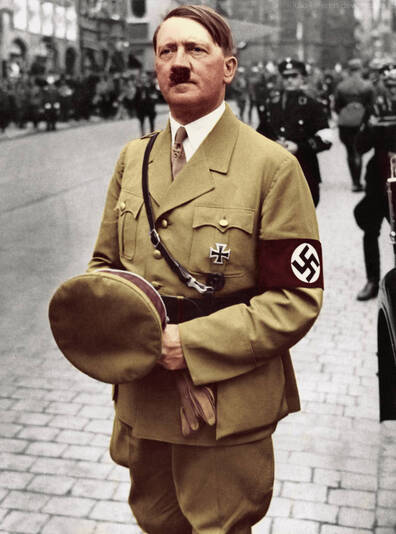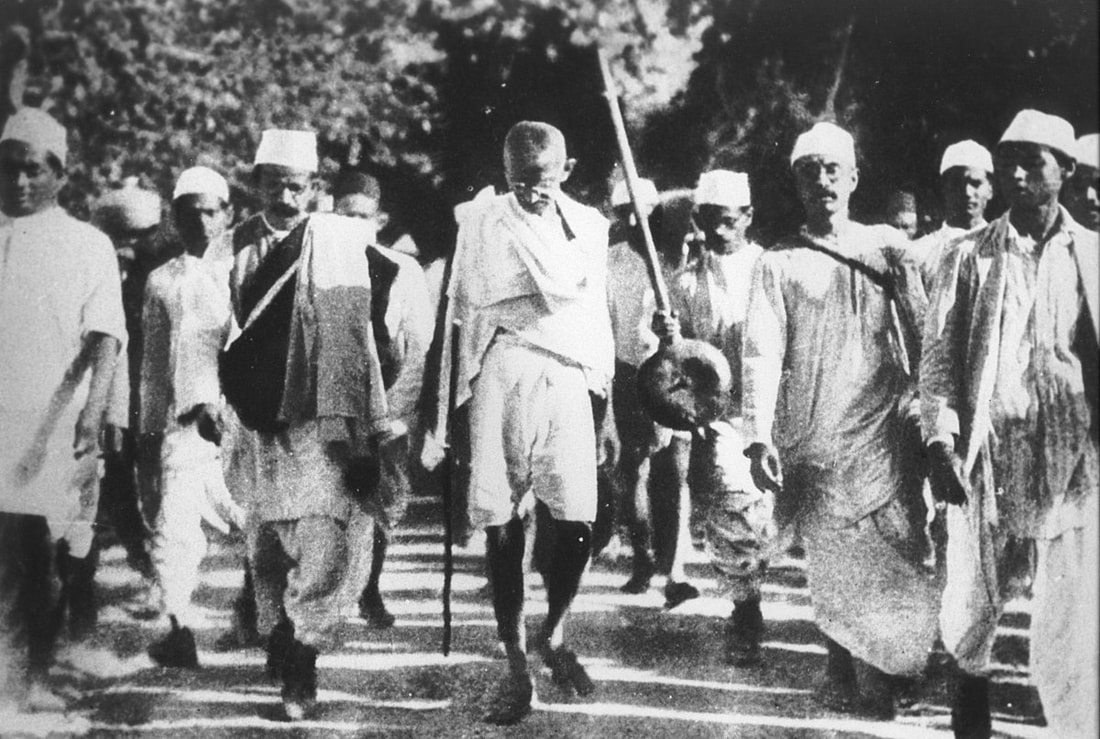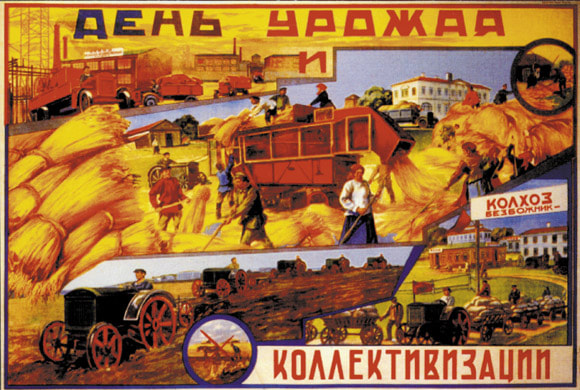|
The Starting Point ... The endless complaint about school history is that it is all just Tudors and Nazis. The school history curriculum is far broader than that. Yet, for those studying modern history GCSE, it does remain somewhat of an inaccurate truism when studying the 1920’s and 30’s that it is really just the story of the rise of Hitler as the main cause of WWII. Yes, Hitler did invade Poland in 1939, but to focus on the rise of Hitler is to vastly oversimplify a global slide towards conflict in the 1920’s and ‘30’s. Britain and France faced aggression not only from Germany but also Italy and Japan, and these huge Empires also faced rapidly growing internal discontent as well as worrying about the threat of Communist Russia. Understanding the wider global problems that Britain and France had in maintain control on their Empires from growing nationalist movements helps to explain why the conflict that emerged really was a ‘World War’ and also why British and French leaders were so slow to spot the threat they faced from Germany when they faced so many concerns from inside and outside their Empires. India For the leading politicians in the British Empire in the 1930’s Indian nationalists like Gandhi ere often seen as more of a threat than Hitler. Hundreds of thousands of Indians had fought for the Empire during WWI and the British Government stated that it supported progressive realisation of responsible government in India as part of the British Empire. Yet Britain proved reluctant to allow Indians any real autonomy, even though by 1931 the Indian Congress had the aim of purna swaraj – total independence. This was something that the British government simply could not allow given the economic and political significance of this ‘jewel in the crown’ of their Empire. It is not surprising then that there was growing discontent in India in this period. To give an example of how hindsight has changed the historical perspective students studying this period will see one of the key moments of 1935 as Hitler’s announcement of the rearmament of Germany. This was a critical unpicking of the Treaty of Versailles and marked the start of the growth in German’s military power. Yet in Britain at the time the press was far more alarmed with growing Indian nationalism. During that year there was particular opposition from many Conservatives in Britain objecting to the passing of the Government of India Act which increased the franchise for Indians and gave more control over domestic politics to Indian provincial governments. This led to the formation in Britain of the India Defence League, with Winston Churchill and Rudyard Kipling among its supporters. Churchill famously said that, ‘England, without her Empire in India, ceases to be a Great Power.’ Headlines in the Daily Mail warned of bloodshed in India if the wise rule of Britain was removed. Understanding the preoccupation of Britain with India helps to explain why so many people simply weren’t that interested in what was happening in Germany at the time. Gandhi, the leading Hindu nationalist, was famed for his dedication to non-violent protest, but this strategy proved to be an inspiration for nationalists in India and many others round the world. One Guardian correspondent wrote that, ‘To face the lathi (the steel-tipped cane of the British) charges became a point of honour and in a spirit of martyrdom volunteers went out in hundreds to be beaten’ and throughout the 1930’s one of the British governments most pressing concern was the question of how to retain control of its wealthiest and largest colony – not how to stop Hitler retaking land lost under the Treaty of Versailles. The USSR Another ‘big news story’ which is often kept as a side-note to British school histories of the 1920’s and 30’s is the start of Stalinist rule in Russia and the vast death toll that this created. Superficially Stalin allowed democracy, instituting a new ‘Constitution for the Soviet Union in 1936 that allowed elections every four years. Yet this was very much just a veneer for a society that still only allowed one political party, and Stalin entrenched his hold on power through the purging of millions of people who he deemed opponents through his secret police, the NKVD, in what became known as ‘The Great Terror.’ Many millions more died through Stalin’s police of Collectivisation where the peasantry were forced to unite their farms into large collectives to make them more efficient. Opposition to this movement led to falling production and destruction of crops by protesting farmers, and through a combination of famine and political executions it is estimated that around five million people died in Ukraine in this period, and over thirteen million across the whole of the Soviet Union. This was of particular geopolitical significance for two reasons. Firstly, as news of this bloodshed slowly filtered through to the west, leaders like Chamberlain became increasingly nervous about the prospect of an alliance with Stalin as a way of keeping German expansionism in check. Secondly, with around 90% of the Soviet Union’s top officers being purged in this period Stalin had left his own military dangerously weak, making him far less confident about the prospect of any sort of conflict. British opinion polls from the summer of 1939 showed that 84% wanted Britain, France and Russia to enter into a full military alliance, but in March of that year Chamberlain had already privately stated that: I have no belief in her ability to maintain an effective offensive, even if she wanted to. And I distrust her motives, which seem to me to have little connection with our ideas of liberty and to be concerned only with getting everyone else by the ears. Chamberlain was not alone in his fears, and a correspondent for the Manchester Guardian in March 1939 wrote that ‘Altogether, the terror in Russia is such that persons living even under the Nazi terror could hardly conceive of such a thing’ although even he admitted that ‘we cannot afford to be particular about our allies.’ All this meant that when Chamberlain did finally open negotiations with Russia he did not even send a senior minister to do this, and in his turn, Stalin made a speech stating the doing deals with fascist regimes was no worse than doing the same with liberal democracies. He saw how reluctant Britain and France were to use military force themselves in their many attempts to appease Hitler’s ambitions, and it is therefore unsurprising that Stalin was negotiating in secret with Germany from January 1939, and that he ended up doing a deal with Hitler as the Nazi-Soviet Pact signed in August. To conclude ...
As these two case studies show, the road to war in the 1930’s was a complex interplay of many different factors. Having a focus purely on Hitler and Nazism as the cause of war can downplay these other issues, and this can be a particular problem for a period which is so often used as a comparison to our own times. Charges of appeasement are regularly thrown at political leaders in comparing them to the people who ‘failed to stop Hitler’. It could be that we learn more useful lessons by understanding the incredibly complex scene of that decade where western leaders had to balance competing threats, as well as the reality that many people around the world themselves saw the influence and rule of these western powers as their biggest threat. Written by Luke Ramsden FRSA. Luke is the Señor Deputy Headmaster at St Benedict's School in London, UK. Luke read History at Oxford and is an award winning educational leader.
1 Comment
Arnie Wijnberg
24/11/2023 08:19:41
A global historical perspective that is much needed, but often overlooked, within the GCSE curriculum.
Reply
Leave a Reply. |
Categories
All
Archives
April 2024
|



 RSS Feed
RSS Feed